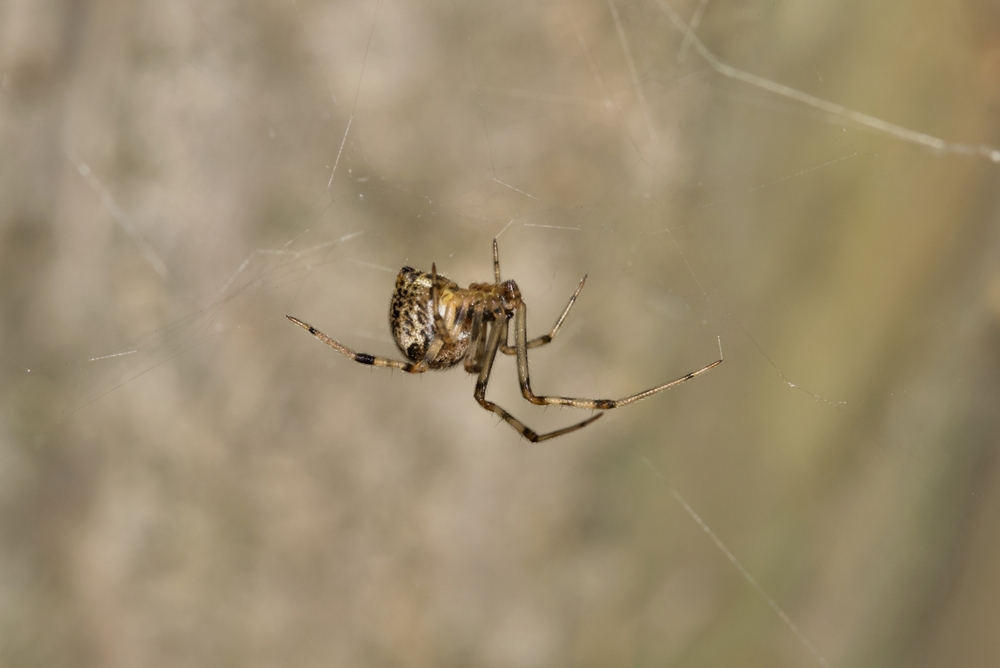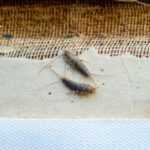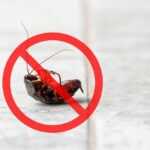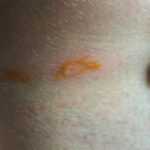Brown Widow Bite: Symptoms, Treatment, and Prevention
A brown widow bite might catch you off guard, but how scary is it really? Let’s unravel the truth about these intriguing spiders—their bites, symptoms, treatments, and clever prevention tips to keep you safe and spider-savvy. With a little know-how, you’ll be ready to handle any encounter with these fascinating yet venomous arachnids.
- Brown widow spiders flaunt a mottled tan to dark brown coat, a bright orange hourglass marking, and uniquely spiky egg sacs—making them stand out among other spider species.
- While a brown widow bite usually causes localized pain, swelling, and a red mark, these symptoms are generally mild compared to the more notorious black widow spider bites.
- Simple but smart steps—like sealing cracks, decluttering your space, and wearing gloves when digging through stored items—can seriously reduce your chances of an unwelcome spider encounter.
Brown Widow Spider Identification
Spotting a female brown widow spider is your first step to staying bite-free. Unlike their sleek black widow cousins, brown widows sport a mottled palette ranging from light tan to deep brown, adorned with striking black accent stripes—a bold line down the back and diagonal bands on the sides. This unique pattern helps you tell them apart from other spiders lurking in your home or garden.
Their signature badge? An orange hourglass shape on the underside of their abdomen, a subtle yet telling contrast to the vivid red hourglass of black widows. This bright marking is your reliable clue when trying to identify brown widow spiders.
And don’t miss their egg sacs! Unlike the smooth, cottony sacs of other spiders, brown widow egg sacs are covered in spiky silk projections, almost like tiny thistles. These spiky sacs often hide in dark, cozy spots such as under eaves, inside storage boxes, or nestled among woody vegetation—perfect clues to their secret hideouts.
Symptoms of a Brown Widow Bite
If a brown widow bites you, it might send a jolt through your system, but knowing what to expect can help you stay calm and take charge. Most bites bring localized pain, swelling, and a red mark at the bite site—symptoms much like those from common house spiders.
Sometimes, you might see a blister or more noticeable swelling, but these reactions usually stay mild compared to the muscle cramps and nausea that black widow bites can cause. In many cases, brown widow bites are just minor venomous bites that heal on their own.
Still, it pays to keep an eye on the bite. Rarely, some bites can trigger a more serious reaction or a growing wound that needs medical care. Watching for spreading redness or unusual pain ensures you get the help you need if things take a turn.
Treatment for Brown Widow Bites
Got bitten? Don’t panic! Quick and proper care can ease your symptoms and keep complications at bay. Here’s your game plan:
- Wash the bite site well with soapy water to ward off infection.
- Apply a cold compress to calm the pain and shrink swelling.
- Elevate the bitten area to help reduce swelling and speed healing.
- Use over-the-counter anti-itch creams, like diphenhydramine, to soothe discomfort.
Usually, these simple steps handle mild brown widow bites just fine. But if you notice signs of infection—warmth, pus, or a growing sore—or experience muscle cramps or trouble walking, don’t hesitate to see a doctor.
In more severe cases, medical professionals might consider administering antivenin similar to that used for black widow bites, as the venom components are related. However, such cases are rare, and most brown widow bites resolve without intensive medical intervention.
Preventing Brown Widow Bites
When it comes to venomous bites, prevention beats cure every time. To keep brown widows at bay, start by sealing cracks and crevices around your home. These spiders are masters of sneaking in through tiny gaps near doors, windows, and vents.
Next, clear out clutter. Brown widows love hiding in messy spots like garages, sheds, and woodpiles. Regular cleaning and organizing make these places less inviting.
When you handle items that might harbor spiders—old boxes, roller skates, gardening gloves—wear gloves to protect yourself from surprise bites. You can also try natural repellents made from essential oils and set sticky traps to keep an eye on these sneaky cobweb spiders.
Additional prevention tips include:
- Inspect outdoor furniture, mailboxes, and vehicles before use, as brown widows often build webs in these spots.
- Keep firewood and debris away from the house foundation to reduce hiding places.
- Use outdoor lighting that is less attractive to insects, as fewer insects mean less prey for spiders near your home.
- Educate family members and neighbors about brown widow identification and bite prevention to foster a safer community.
- Regularly vacuum and clean storage areas to remove webs and egg sacs, reducing spider populations.
Habitat and Behavior
Brown widow spiders are fascinating creatures with some surprising habits. Unlike black widows, who prefer dark, hidden corners, brown widows often pick more open spots—under eaves, on ledges, or even nestled in woody vegetation and hollow trees. Their irregular webs glisten with sticky droplets and include cozy retreats where they hide or play dead if threatened.
Their webs are irregular and coated with sticky silk droplets that trap prey. Once an insect is caught, the spider immobilizes it by casting sticky silk and injecting venom, a hallmark hunting technique among theridiid spiders.
Believe it or not, brown widows have been spotted in unusual places like ocean beaches in Brazil, spinning webs among beach morning glories. Knowing where they like to hang out helps you spot and manage these invasive species before they become a bigger problem.
Natural Enemies of Brown Widow Spiders
Nature has its own pest control! Birds and lizards are the main vertebrate predators keeping brown widow populations in check, sharing their habitats and helping balance the ecosystem.
Among invertebrates, mud dauber wasps are notorious hunters of brown widows and other Latrodectus spiders. These wasps provision their nests with widow spiders, playing a starring role in the natural order. Other spiders and insects also prey on brown widows, keeping their numbers in check.
Medical Importance of Brown Widow Bites
From a medical standpoint, brown widow bites are generally less worrisome than those from black widows or brown recluses. Even though their venom is potent, mature females usually inject less venom during a bite, which means milder symptoms—mostly localized pain and a red mark.
Brown widows are shy and often choose to play dead rather than bite, lowering the risk of venomous encounters. Still, if bitten, it’s wise to watch for worsening symptoms or a growing wound and seek medical advice if needed.
Research published in the Southern Medical Journal and Medical Entomology highlights that while brown widow spider venom contains neurotoxic components similar to other widow species, the amount of venom injected is typically less, resulting in fewer systemic symptoms. The genus Latrodectus, which includes the brown widow (Latrodectus geometricus), southern black widow (Latrodectus mactans), and other widow species, is known for venomous bites that can cause latrodectism, but brown widows are considered less dangerous.
Effective Control Methods
Tackling brown widow populations takes a multi-pronged approach. Spider-specific insecticides can work when carefully applied to webs and hideouts, but the best long-term strategy combines cleanliness, habitat modification, and targeted insecticide use.
Seal cracks, declutter regularly, and vacuum garages and storage areas. When you vacuum, empty the bag carefully to avoid spreading spiders.
Brown widow spiders are fascinating, venomous creatures that pose less danger than their infamous black widow cousins. Knowing how to identify them, recognize bite symptoms, treat bites, and prevent encounters puts you in control.
Stay alert, take smart precautions, and enjoy peace of mind knowing you’re ready should you ever cross paths with a brown widow.
Frequently Asked Questions
What should I do if I get bitten by a brown widow spider?
Clean the bite area with soapy water, apply a cold compress, and use anti-itch cream for relief. See a healthcare professional if symptoms worsen or a growing wound develops.
How can I prevent brown widow bites?
Prevent brown widow bites by sealing cracks and crevices, decluttering your home, wearing gloves when handling stored items, and regularly inspecting outdoor and indoor areas where spiders may hide. Using natural repellents and sticky traps can also help monitor and reduce spider presence.
Are brown widow bites dangerous?
While brown widow venom is potent, bites typically cause mild local symptoms like pain and redness. Severe reactions are rare but possible, so monitoring the bite and seeking medical care if symptoms worsen is important.
How do brown widows differ from black widows?
Brown widows have a mottled brown coloration with an orange hourglass marking, while black widows are shiny black with a vivid red hourglass. Brown widows also have spiky egg sacs, unlike the smooth sacs of black widows.
Can brown widows be found everywhere?
Brown widows are invasive species that have spread to many warm regions, including southern California, Florida, and parts of the southern United States. They prefer peridomestic habitats but can adapt to various environments.
What should I do if I find brown widow egg sacs?
Avoid disturbing egg sacs directly. Use gloves and tools to remove them carefully or hire pest control professionals if infestations are large. Regular cleaning and habitat modification help prevent new egg sacs from forming.
Do brown widows inject as much venom as black widows?
Brown widows generally inject less venom than black widows during a bite, which contributes to their milder symptoms, even though their venom is similarly potent.
What are the signs of a severe reaction to a brown widow bite?
Severe reactions may include muscle cramps, spreading redness, swelling beyond the bite site, difficulty walking, or systemic symptoms like nausea. Seek immediate medical attention if these occur.





